
“The [Su-30MKI] fleet is prohibitively expensive equipment and faces problems due to high, premature failure rate of subsystems like engines, radars, missiles, avionics, etc.”
Vinod Kumar Narang, a retired Indian Air Force air vice-marshal.
A Historical View Of Su-30
The Soviet air force had inducted the Su-27 in the mid 1980s. By the late 80s, it was clear that the new avionics suite was too much for a single pilot to handle. On the other hand, the Soviet air space was massive and the Soviet air force was facing a hard time patrolling such a large area.
Read More MiG-35 : A Lemon from Russia’s Mikoyan Design Bureau
Two Su-27UBs were converted to serve as proof of concept models. Their cockpits were totally revamped. Both the pilots could fly the jet or control its weapons alternatively. This allowed the pilots to rest during a sortie by exchanging their responsibilities as and when needed. It also received new navigation suites along with data links which improved its command and control capabilities. The jet officially entered service as the Su-30, very few samples were completed before the Soviet Union collapsed and all orders were cancelled by RuAF.

Read More Sukhoi Su-34 ‘Fullback’: An Accident-prone Aircraft of RuAF
Sukhoi thus survived the period after the collapse of the Soviet union by selling literally 100s of jets to several countries, most importantly by selling similar variants to two of the most populous countries on the planet ie India and China.
Read More Russian Missiles Don’t Work Says Indian Air Force
The Indians initially procured the basic Su-30K, a total 8 of them followed by 10 Su-30MK. These jets were bought to allow a smooth transition to the Su-30MKI and as a stop gap to make up for the delays in the MKI programme. This order also included 32 standard Su-30MKIs. India then signed a deal for manufacturing 140 Su-30MKIs domestically. This number first rose to 180 and then to 222. Indian variant Su-30mki is comprised with French, Israeli and Indian Avionics, electronics, engines with TVC nozzles and armament.
On the other hand, the Chinese procurement of Flankers started with the Su-27SK, 100s of which have been procured either off the shelf or from local production. This deal helped keep the Sukhoi bureau alive during the 1990s as it marked the first export of Flanker to a non-CIS state. This was followed by deals for the Su-30MKK and its improved version Su-30MK2. The number of jets procured is around 80 and it cannot be confirmed as different sources show different numbers. The Chinese have started producing copies of the Su-30MKK designated J-11 series. China eventually stopped buying Russian origin airframe, avionics, flight control system, fly-by-wire Systems and replace them with Chinese origin and called them J-11. China heavily modified Russian fighter jets and tern then into J-15 and J-16 except Chinese engineers couldn’t reverse engineered engines fast enough to be placed J-11 engines with Chinese origin. Intial Chinese variant comes with Zhuk phased array radar which is less capable of Indian, Russian and Malaysian variants Bars Radar.
The Chinese developed incremental variants designated Su-30MK2 and Su-30MK3 for their air force. The MK2 added anti-ship capability along with upgraded avionics.
The Russians have ordered Su-30s from both Irkut and KnAAPO ie Su-30SM and Su-30M2 respectively. The Russian took Indian modifications of Su-30MKI and tern them into Su-30SM and su-30SME with Russian origin electronics and Avionics.
The Su-30MKM retained the N011M Bars radar, OLS-30 IRST, Al-31FP engines with TVC nozzles while the Indian and Israeli systems were replaced by equivalent systems from France, South Africa and Russia. These jets carry the Damocles targeting pod instead of the Litening. The South Africans provided the self defense suite, while the Indian RWR and the MAWS were replaced by Russian equivalents. The variant operated by Algeria retains the same avionics suite of the Su-30MKM.
The Su-30 has been sold to many countries with the Russian origin equipment and initial first letter of the country, named Su-30MK2, Su-30MK3, Su-30MK2V, Su-30MKA, Su-30MKV, Su-30MKI and Su-30MKK. The latest variant is Su-30SME. The SME stands for standardized, modernized and Export. The word MK stands for standardized and Modernized.
Development of Su-35
The development history of the Su-35 is a bit complicated. An upgraded Flanker with canards (additional small wings on the forward fuselage) called the Su-35 first appeared way back in 1989, but is not the same plane as the current model; only fifteen were produced. Another upgraded Flanker, the two-seat Su-30, has been produced in significant quantities, and its variants exported to nearly a dozen countries.

The current model in question, without canards, is properly called the Su-35S and is the most advanced type of the Flanker family. It began development in 2003 under the Komsomolsk-on-Amur Aircraft Production Association (KnAAPO), a subcontractor of Sukhoi. The first prototypes rolled out in 2007 and production began in 2009.

The Su-35 is equipped with two AL-41F1S turbojet engines with an afterburner thrust of 14,500 kgf each. The plane has a length of 21.95 meters, a wingspan of 14.75 meter and a height of 5.92 meters.
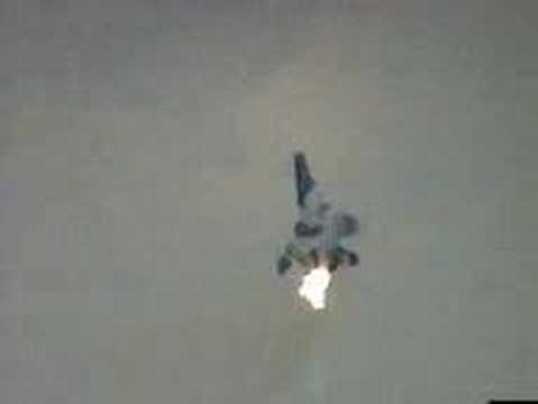
The fighter jet’s service life assigned by its manufacturer is 6,000 hours or 30 years and the term of its engine operation is 4,000 hours.
Read More Russian Missiles Don’t Work, Says Indian Air Force
On April 26, 2009, a prototype of the Su-35 plane skidded off the runway during its speedy run and received considerable damage. The test pilot ejected to safety.
Su-30MKI exposed many weaknesses during Kashmir skirmish,–Limited autonomous operations, poor navigation, poor reliability, poor display, poor situational awareness, problems with targets flying in formation.
ET Bureau
Engine Problems
The Russian-made Sukhoi Su-30 MKI multirole aircraft that are the heart of the Indian air force’s military strategy have developed engine problems, an air force official said. Engines for the 28 aircraft acquired so far have proven problematic and require overhauls much earlier than scheduled, the official said.
The trouble has forced Indian defense planners to consider slowing the delivery of additional Su-30 MKIs due from Russia. The most Russian engines have blade overheating problems and requires extensive overhaul before the due date of overhauling. Indian Su-30MKI engines were sent to overhaul when the aircraft was flawn 700 hours before the completion of 1000 hours.
The twin-engine jets have failure-prone motors. Their AL-31FP engines break down with alarming frequency.
In March 2015, Indian defense minister Manohar Parrikar revealed the propulsion problems.

There have been no fewer than 69 investigations involving engine failures since 2012, according to Parrikar. Between January 2013 and December 2014 alone, the Indian Air Force recorded 35 technical problems with the turbofans.
Why so maintenance issues with Su-30 aircrafts?
The problem is that Russian design aircraft, even the late-Cold War models like the Su-27 (from which the Su-30 was derived) were still built for less intense peacetime use. India, Russia and China don’t like to discuss this because it is now generally accepted that the intense Western style of training is best. Russia insists that the Su-30 was built for this, but decades of practical experience says otherwise. India does not like to dwell on this because India accepted Russian assurances that the Su-30 was a “Western” fighter. It looked like one, but the published and actual data shows that the Su-30 is not as sturdy, especially when forced to operate like a Western fighter in peacetime.
Since 2010 India has been complaining to Russia about the high accident rate of their Su-30MKI jet fighters. With the high accident rate comes equally frustrating low reliability. Fifty of these Russian designed aircraft were built in Russia and the rest of the 272 aircraft order are being assembled locally. Deliveries should be complete by 2019 and at the moment India is not keen on ordering any more. Most of the problems are related to engines and Russia says it has narrowed most of the problems down to difficulties related to ball bearings. The engines are also assembled in India, using Russian and Indian made parts. Russia has devised several fixes for the engine problem but the readiness (for combat) rate of the Su-30MKI is still about 55 percent (compared to 70 percent or higher for most other modern aircraft).
The Indian Air Force has lost five of its Russian designed Su-30MKI jet fighters since 2009. In 2011 the commander of the Indian Air Force took an hour-long flight in one of India’s Su-30MKI to reassure Indian pilots that the Su-30MKI was safe. Two had crashed in 2009, due to mechanical failures and there were widely publicized reliability problems with the engines and many of the other Russian designed and built components of the aircraft. There have been two losses since 2013.
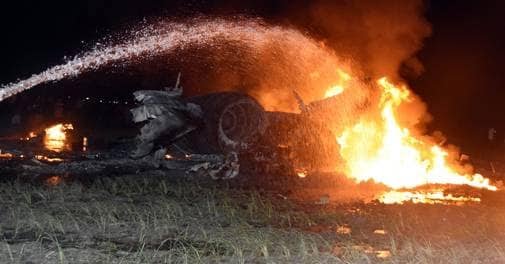
Indian pilots are understandably nervous about the safety of the many Russian warplanes they fly. The MiG fighters are the most dangerous but the more recent Su-30 models were believed to be a lot safer. Recent problems indicate this may not be the case. Russian efforts since then to fix the problems have not reassured Indian pilots or politicians.
The MiGs crashed so often that India decided to retire all of them.
History of Accidents
The Sukhoi Su-30MK2 number #8585 of Vietnamese Air Force crashed into Sea. A military aircraft went missing during a training session off the coast of the central province of Nghe An at around 8am June 16 2016, reported VN Express.
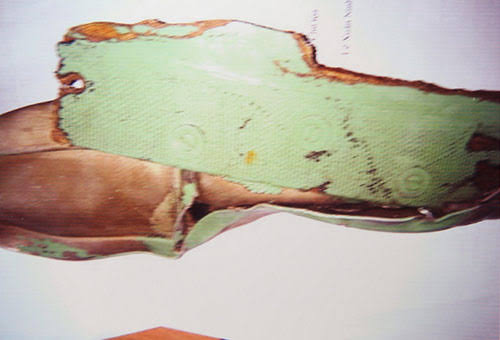
Su-30MK2 multi-role fighter aircraft is a version of the Su-30MKK, a member of the Su-30 aircraft family.

The aircraft was developed by Sukhoi in 2002 and is manufactured by Komsomolsk-on-Amur Aircraft Production Association (KnAAPO). The Su-30 aircraft were involved in accident with many operators of this aircraft which includes air force of Vietnam, Indonesia, Uganda, Venezuela, India and China.
The Su-30 and its siblings have history of mid air engine failure, flight control Systems failure, avionics failure, radar dysfunction and airframe’s structural integrity problems.
Logistical Nightmare of Su-30
Russian aircraft, in general, have components that have lower service-life and Meantime between Failures (MTBF). Meaning you need to replace the spares & various parts at a higher rate, carry out regular maintenance work, etc.
Another issue regarding maintenance is not the supply of spare parts but rather the rapidity of repairs of line and shop replaceable units because Russian suppliers make good money by supplying new spare parts at substantial profit margins, but are always reluctant to quickly make repairs at 25 percent of the cost of new items.
On top of that, the AL-31FP engines have a horrible record when it comes to reliability (which isn’t surprising) and is very susceptible to Foreign Object Damage (FOD). It is also very maintenance intensive, ‘officially’ the thrust vectoring nozzles require overhaul every 500 hours and the entire engine every <1000 hours.
However, in reality, the engine-defects started showing-up after only 500 hours of flying (as reported by MoD in 2015). The engine needs to be sent to Russia for maintenance/overhauls every time (Since it lacks a modular-engine concept, one of the critical reason for IAF’s withdrawal from the program). This a logistical nightmare, primarily if you operate a large fleet.
Read More Russian Missiles Don’t Work Says Indian Air Force
Moreover, the engines have a maximum life of 3000 hours and require overhaul every 1000 hours (again officially, as per the manufacturer). So each engine requires three overhauls (likely more) in its entire life. While the Su-30MKI’s airframe has 6000 hours life – so you need at minimum 4 engines for the whole of the life of the aircraft, doing 12 overhauls at minimum. How much do you think all of that is going to cost? This is just for the engines, similar story with most high-value components and the airframe itself requires four overhauls (every 1,500 hours) in an entire lifetime. All of these increases the overall expenditure so much that it limits most Air Forces’ ability to buy ‘too many’ extra spares at a time.
“So if you’re not in Russia and fly the Su-30 a little excess like the Indian AF often does, maintenance and availability rate will be a nightmare.”
Arup Raha, Former Air Marshal, Indian Air Force
Then there are additional problems with HAL which is another story in itself. The internal corruption & incompetence have resulted in low productivity, excess manufacturing defects, high failure rate of HAL manufactured components and poor after-sales service. As per the contract, HAL was supposed to produce Su-30s at a lower cost in India than importing them. However, it’s ironic that Su-30MKI manufactured by HAL costs nearly twice, i.e. $121 million than those bought from Russia. Just few months ago, HAL was caught supplying “used” engines in newly built Su-30MKI.
Can Russian Fighter Jets handle intense pilots training?
Aviation historians can point to one major difference between Indian use of the Su-30 and the way Russia and China use them. India has a Western attitude towards peacetime pilot training. That is, Indian pilots fly a lot and do it under combat conditions (lots of high speed, long distances and violent maneuvering). Indian Air Force leaders, like their Western counterparts, believe it is better to lose some aircraft and pilots during intense peacetime training than lose even more in wartime because the other side had better trained pilots. This is also the lesson of history and pilots trained in the “Russian Style” (less air time and less strenuous maneuvers) have always done much worse against pilots trained in the more intense Western style.
Although Russian doesn’t admit but Russian aircrafts aren’t designed and built for intense pilots training like the western counterparts. Russian themselves know this very well and service readiness of Russian aircraft is pretty poor, less than 47%. This is a cronic problem among all air forces who uses Russian fighter jets.
Su-30 is a cheaply designed and built to suit necessity of RuAF. To fund the projects, Russia is willing to transfer technology and sale anyone who offers a buck to keep the Russian factory running. Currently, Malaysian Su-30MKM fleet is grounded and more than half of Indian Su-30mki are grounded.
Russia Grounded Entire Fleet of Earlier Model Su-27 Flanker
The Russian air force grounded its entire fleet of Sukhoi Su-27 fighter jets after a fatal crash near Moscow. The Su-27, commonly known as Flanker — the code name given to it by NATO, which assigns one to every piece of Russian military hardware — is the backbone of Russia’s air force. The grounding means that about half of Russia’s fighter jets cannot take to the air.
Why did China buy Su-35 when PLAAF operates J-20?
This is a fascinating question. There is a short answer to this question. To learn and reverse engineer three components:
- Russian AL-41F1S Turbojet Engine
- Russian Phased Array Radar
- 400KM range Air-to-Air Missile
Beijing expressed interest in purchasing only four Su-35s last year, but that was rejected by Moscow, which had originally expected China to buy 48 planes, Moscow’s Vedomosti business daily quoted an official from Russia’s Federal Service for Military and Technical Co-operation as saying.
It also quoted Igor Korotchenko, head of the Russian Defence Ministry’s public council, as saying Moscow also asked Beijing to sign an agreement not to make copies of the Su-35.
“We decided to buy the Su-35 because it’s a fact that our home-made engines have failed to measure up to the Russian products.”
A Beijing-based PLAAF senior colonel, who requested anonymity.
He said China was still playing catch-up, despite recent headlines hailing its progress on military modernisation.
“Engines have been the biggest headache and we are still trying to cope with it,” he said. “The purchase of the Su-35s might help our J-20 project, but there are too many deeper problems hiding in our military industrial system that are hindering our research and development.”
A Beijing-based PLAAF senior colonel, who requested anonymity.
Andrei Chang, editor-in-chief of the Canadian-based Kanwa Defence Review, said the possible Su-35 deal was aimed at obtaining 117S engines, the most advanced Russian engine installed in a single-seat, twin-engined fighter. “Beijing wants the engine [of the Su-35]… because their J-20 project failed to solve the most challenging part – the engine,” Chang said.
The J-20, China’s first stealth fighter, was unveiled early last year. Photographs posted on the internet by mainland military enthusiasts show the J-20 prototype has a stealth body shape similar to the American F-22 and F-35, with a hint of the Russian Su-27 in its turbofan engines. Military experts at home and overseas do not expect the J-20 to enter service until 2018 because of the engine problem.
Beijing’s earlier expression of interest in purchasing only four Su-35s was rejected by Russia because of copycat concerns, the Moscow Times reported.
“Beijing compromised on the size of [the Su-35 deal] … because they think 24 is an acceptable negotiation quantity, while Moscow feels it is worth considering,” Chang said.
The deal could also give a much-needed boost to Russia’s military industry, which desperately needs China’s business because formerly stalwart customers are proving less reliable.
“The Russian side has found their Su-35 production line lacks enough orders to [reduce unit cost and make it a profitable project],” Chang said.
“Russia originally expected some sales to Libya, who promised to order some [Su-35] jets under Muammar Gaddafi’s administration, while Venezuela also planned to place orders,” he said. “But both have now backtracked on those promises due to political upheaval at home.” However, the export of Su-35s to China has stirred up a heated debate among Russian defence industry enterprises and military officials, with opponents to the deal highlighting China’s history of copying Russian weapons, Chang said.
China has long been producing unauthorised copies of the Russian Su-27 – as the Jian-11. It has also designed a two-seat fighter bomber version (the Jian-16) and a stealth version (the Jian-17), and obtained an aircraft-carrier-based version of the Su-30 from Ukraine to produce the Jian-15.
But Beijing insists they are all indigenous designs that just happen to bear some resemblance to Russian fighters.
“I think the Su-35 deal will be submitted to the Kremlin to make the final decision,” Chang said, adding there was still a long way to go before a final deal was signed.
“China and Russia have just signed a memorandum this year, meaning both sides have yet to decide on the deal because they need further rounds of negotiation and discussion involving prices, which models of Su-35 will be exported, what kinds of weapons systems will be involved in the deal, technology transfer and other details.”
Why did India, Algeria and Malaysia complain about poor quality of Russian aircraft, Why do China and Vietnam not complain?
India, Malaysia and Algeria have options to buy western fighter jets. These air forces aren’t willing to give up quality training over poor quality equipment and biased political decisions by their politicians who are mostly corrupt.
China doesn’t buy fighter jets from Russia to fly them but to reverse engineer them and produce domestically. There is no point to complain when Chinese didn’t buy these aircraft to fly them. Vietnam is in a unique situation with only one option that is Russia. Vietnam can’t complain about poor quality.
Why do so many countries wants to buy Russian aircraft and weapons knowingly that these aircraft and weaponry will not survive few years and never be combat ready?
One common reason for all these issues, if you look at lists of countries bought Russian and Chinese weaponry are on the top of the list of Transparency Internationals list of highly corrupt countries. According to Sweden based SIPRI, most Asian, African and Latin American countries are susceptible to corruption when comes to military procurement.
Malaysian, Indonesian and Indian officials were prosecuted for corruption, The former Prime Minister of Malaysia was prosecuted for corruption and money laundering which involved Rosoboronexport and Rostec. The way decisions were made by Egyptian Government, there was certainly be corruption involved in Egyptian procurement of Russian MiG and Sukhoi aircraft. The former Bangladeshi Prime Minister was prosecuted for taking kickbacks from Russian officials. Russian officials offered kickbacks to Algerian officials if Algeria would have retained poor quality MiG-29s and didn’t return them to Russia which Algerians declined to accept the offer.
Second factor is incompetence of the air forces and associated organization who are unable to make quality decisions based on merit rather than based on percieved judgment that America or Europe will sanction them at some points of the life cycle of the weaponry. American and European would not sanction any country which follows the civic rules and govern by democratic norms.

Third factor is cost of the western aircrafts. The western aircrafts are expensive for million reasons. The western weaponry are battle proven and highly advanced than anything China and Russia have to offer. It is guaranteed that the western aircrafts will win the battle in any conditions.
Fourth factor is knowledge gap of these countries about western weaponry. The Asian, African and Latin American countries have little or no knowledge of the western weaponry. The western weaponry are a complex piece of machines, requires lot of study, maintain knowledge, maintain life cycle and constantly upgrade technologies. When Russian and Chinese are slowly progressing towards 4++ generation fighter jets, American and European are progressing towards sixth generation fighter jets. The knowledge gap is almost 30 years. Technology wise, the United States of America and European are almost 30 years ahead of Chinese and Russian aerospace industries.
You can take a look at the recent Kashmir conflict between India and Pakistan, highly trained Indian pilots were let down by Russian made Su-30mki and missile which is allegedly considered to be air superiority fighter aircraft, but against American made F-16 fighter jets and AIM-120C-5 AMRAAM, the Sukhoi Su-30MKI didn’t stand a chance. Indian air force pilots made u-turn during the combat due to fact that Russian missiles were out of range and N011M Bars Radar does not have Wide Field of Regard and cannot lock on to F-16 while pulling high G.
The Su 30 MKIs that were part of the Indian response force could not get Pakistani jets within firing range even as the enemy F 16s fired multiple AMRAAM missiles at them from long range.
ET Bureau
The Indian Air Force could explain loss of MiG-21 but it would be utter nonsense and embarrassment to explain to Indian people that highly customized, spending billions of dollars of tax payer money—, the Sukhoi Su-30MKI which is sold to Indian people as an air superiority fighter aircraft didn’t stand a chance in front of 20 years old F-16C of Pakistan Air Force!. Hence, in August 2019, Indian Air Force rejected HAL’s proposal to buy additional 40 Su-30MKI.
To conclude this article, some of the problems are fundamental in all Russian aircrafts while rest are political, corruption, poor training, knowledge gap, industrial capability gap and incompetence.
© 2019 – 2022, GDC. © GDC and www.globaldefensecorp.com. Unauthorized use and/or duplication of this material without express and written permission from this site’s author and/or owner is strictly prohibited. Excerpts and links may be used, provided that full and clear credit is given to www.globaldefensecorp.com with appropriate and specific direction to the original content.

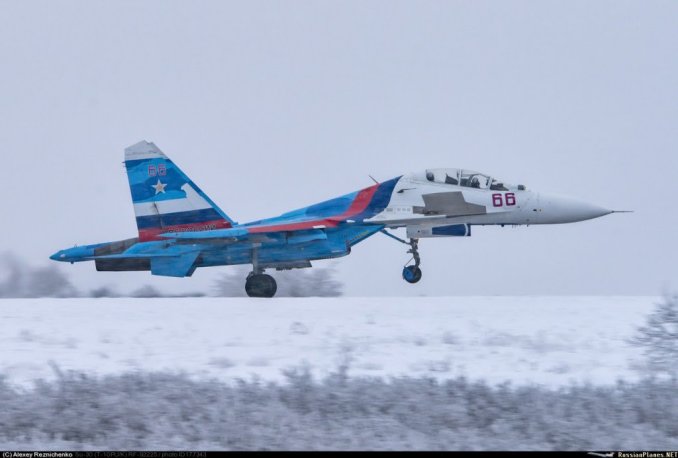
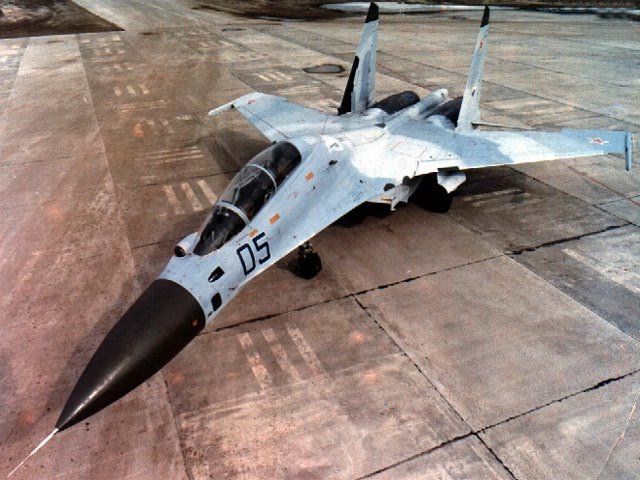

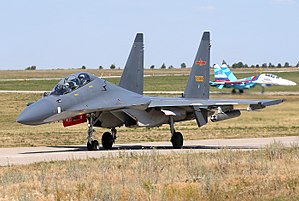


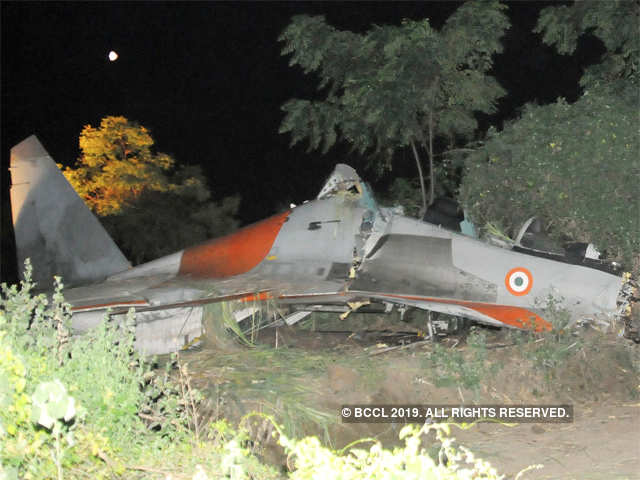







Be the first to comment